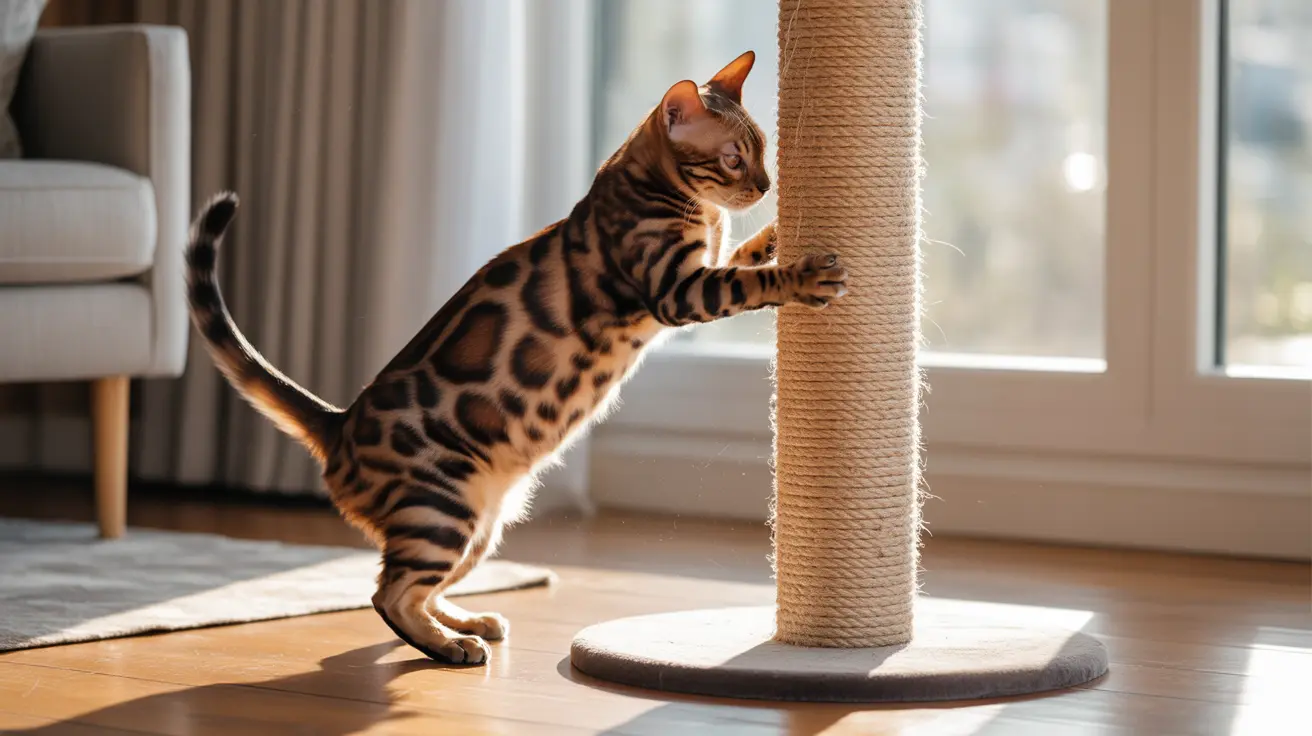If you've ever wondered why your beloved feline friend treats you like their personal scratching post, you're not alone. This common yet puzzling behavior can be frustrating and sometimes painful for cat owners. Understanding why cats scratch humans instead of appropriate surfaces is key to addressing and redirecting this natural behavior.
In this comprehensive guide, we'll explore the various reasons behind this behavior, from instinctual drives to environmental factors, and provide practical solutions to help both you and your cat live more harmoniously.
Understanding Natural Feline Scratching Behavior
Scratching is an essential part of feline nature, serving multiple vital purposes. Cats scratch to remove dead outer claw sheaths, mark their territory through both visual marks and scent glands in their paws, and stretch their muscles. When this natural behavior is directed at humans, it often indicates underlying needs or communication attempts that require attention.
Common Reasons Your Cat Uses You as a Scratching Post
Attention-Seeking Behavior
Many cats learn that scratching their owners results in immediate attention, even if it's negative. This response can inadvertently reinforce the behavior, creating a cycle where your cat scratches you whenever they want interaction or resources.
Overstimulation During Petting or Play
Cats can become overstimulated during physical interaction, leading to sudden scratching. This is their way of communicating that they've reached their threshold for physical contact and need space.
Lack of Appropriate Scratching Surfaces
If your cat doesn't have access to suitable scratching posts or surfaces, they may resort to using you as an alternative. This is especially common when available scratching surfaces don't meet their texture or orientation preferences.
Solutions to Prevent Human-Directed Scratching
Creating an Enriched Environment
Provide multiple scratching options throughout your home, including both vertical and horizontal surfaces. Different textures like sisal, cardboard, and carpet can help determine your cat's preferences.
Proper Training and Redirection
When your cat attempts to scratch you, immediately redirect them to an appropriate scratching surface. Reward them with treats or praise when they use these designated areas, reinforcing positive behavior.
Regular Claw Maintenance
Keep your cat's claws trimmed regularly to minimize damage when scratching does occur. If you're unsure about proper trimming techniques, consult your veterinarian for guidance or demonstration.
Signs Your Cat's Scratching Needs Medical Attention
Sometimes, excessive scratching behavior can indicate underlying health issues. Watch for signs such as:
- Sudden increases in aggressive scratching
- Scratching accompanied by other behavioral changes
- Signs of pain or discomfort during normal activities
- Changes in usual scratching patterns
Frequently Asked Questions
Why does my cat use me as a scratching post instead of furniture or scratching posts?
Your cat might choose you over furniture due to attention-seeking behavior, lack of suitable alternatives, or because they've learned it gets a response. Ensuring they have appropriate scratching surfaces and consistent positive reinforcement for using them can help redirect this behavior.
How can I stop my cat from scratching me while still allowing them to scratch appropriately?
Provide multiple appealing scratching surfaces, redirect scratching behavior to appropriate items, and use positive reinforcement. Never punish scratching, as this can create anxiety and worsen the behavior.
What does it mean when my cat scratches me during petting or playtime?
Scratching during interaction often indicates overstimulation or the need for space. Learn to recognize your cat's body language cues that signal they're becoming overwhelmed, and respect their need for breaks.
Could my cat's scratching behavior be a sign of stress, fear, or medical issues?
Yes, sudden changes in scratching behavior can indicate stress, anxiety, or underlying medical conditions. If you notice significant changes in your cat's behavior, consult with your veterinarian.
What types of scratching posts or surfaces attract cats away from scratching people?
Cats often prefer tall, sturdy posts covered in sisal rope or natural materials. Offering both vertical and horizontal scratching surfaces in various textures helps identify your cat's preferences and encourages appropriate scratching behavior.
Conclusion
While being used as a scratching post isn't ideal, understanding why your cat exhibits this behavior is the first step toward resolution. By providing appropriate alternatives, maintaining consistent training, and addressing any underlying issues, you can help your cat develop better scratching habits while maintaining a strong bond between you both.






